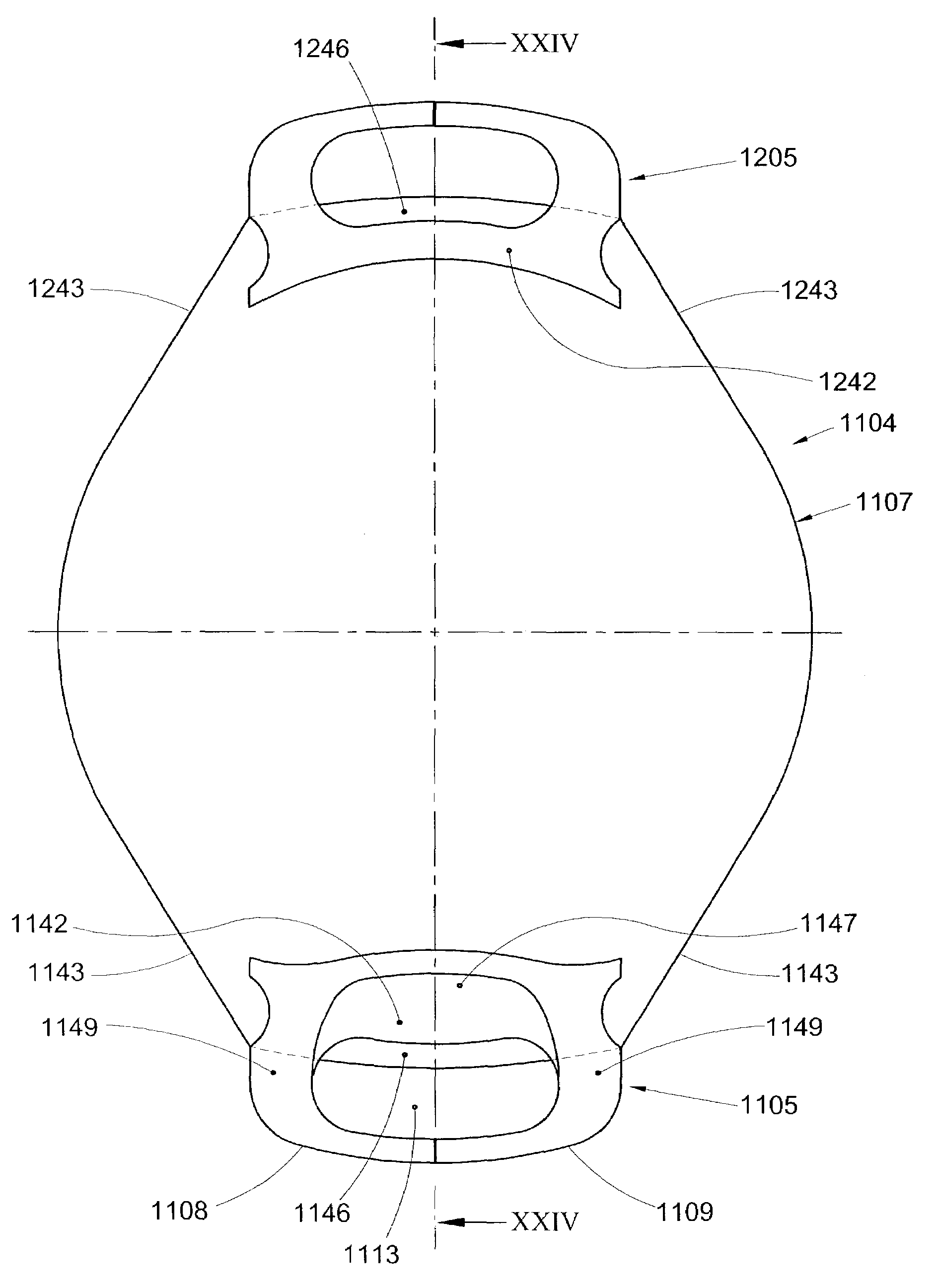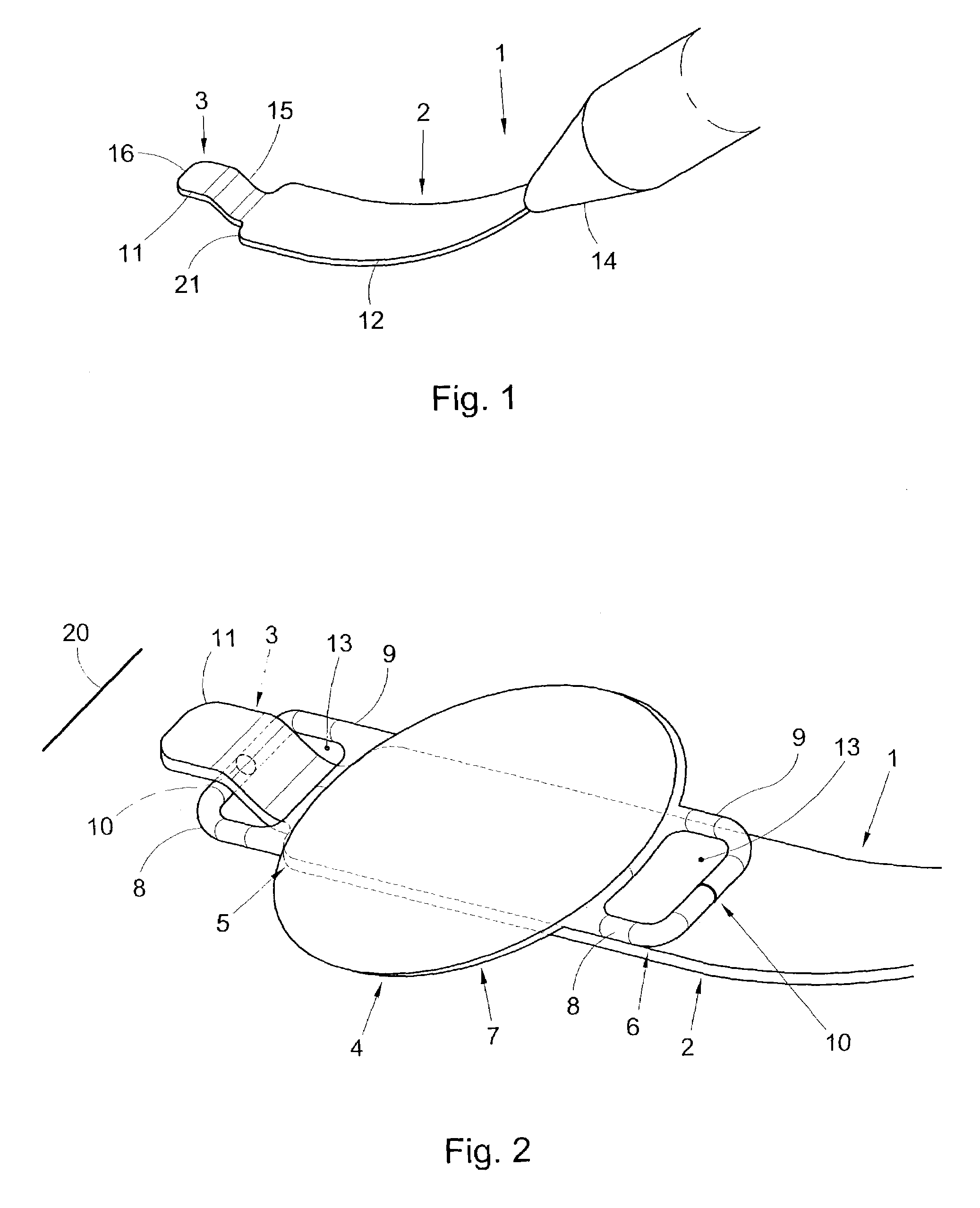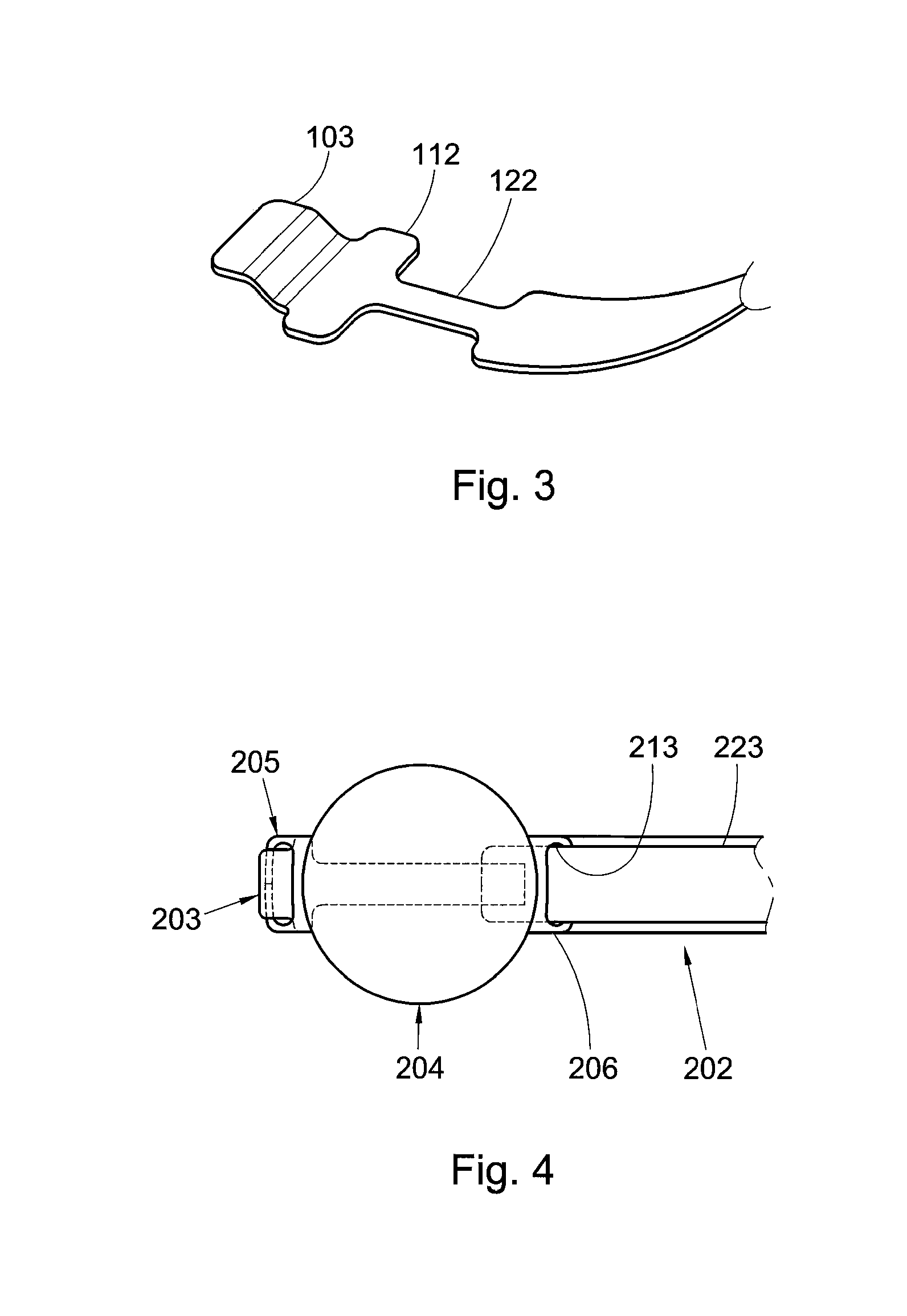Intraocular lens for implantation in an eye and instrument and methods for insertion of such a lens
a technology for intraocular lenses and eye and instrument, which is applied in the field of intraocular lenses for implantation in eye and instrument and methods for insertion of such lenses, can solve the problems of difficult control of the position of the lens before insertion in the tube and after release from the tube, and the risk of damaging the anterior chamber and in particular the cornea, so as to reduce the risk of the lens touching and facilitate the handling of the lens. , the effect of improving the control of the lens orientation
- Summary
- Abstract
- Description
- Claims
- Application Information
AI Technical Summary
Benefits of technology
Problems solved by technology
Method used
Image
Examples
Embodiment Construction
[0042]The invention is first described with reference to FIGS. 1 and 2, in which first examples of an instrument and a lens according to the invention are shown. The lens shown in FIG. 2 is also shown in FIG. 18.
[0043]The inserting instrument 1 shown in FIGS. 1 and 2 is for inserting an intraocular lens 4 into an eye via an incision 20 (schematically shown in FIG. 2) in the cornea. The instrument 1 has an elongate inserting member 2 projecting from a grip 14 and, at a distal end of the member 2, a hook 3 projecting transversally from the member 2. The lens 4 to be implanted using the instrument 1 has haptics 5, 6 radially projecting from opposite sides of an optical portion 7 of the lens 4. The optical portion 7 is deformable. The haptics 5, 6 are each formed by a pair of arms 8, 9 for clamping iris tissue between surfaces of the arms 8, 9 facing each other in a clamping area 10 and are arranged for supporting the optical portion 7 in a position parallel to and against an anterior i...
PUM
 Login to View More
Login to View More Abstract
Description
Claims
Application Information
 Login to View More
Login to View More - R&D
- Intellectual Property
- Life Sciences
- Materials
- Tech Scout
- Unparalleled Data Quality
- Higher Quality Content
- 60% Fewer Hallucinations
Browse by: Latest US Patents, China's latest patents, Technical Efficacy Thesaurus, Application Domain, Technology Topic, Popular Technical Reports.
© 2025 PatSnap. All rights reserved.Legal|Privacy policy|Modern Slavery Act Transparency Statement|Sitemap|About US| Contact US: help@patsnap.com



